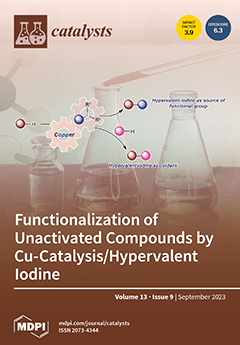This multi-disciplinary paper aims to provide a roadmap for the development of an integrated, process-intensified technology for the production of H
2, NH
3 and NH
3-based symbiotic/smart fertilizers (referred to as target products) from renewable feedstock with CO
2 sequestration and utilization while addressing environmental issues relating to the emerging Food, Energy and Water shortages as a result of global warming. The paper also discloses several novel processes, reactors and catalysts. In addition to the process intensification character of the processes used and reactors designed in this study, they also deliver novel or superior products so as to lower both capital and processing costs. The critical elements of the proposed technology in the sustainable production of the target products are examined under three-sections: (1) Materials: They include natural or synthetic porous water absorbents for NH
3 sequestration and symbiotic and smart fertilizers (S-fertilizers), synthesis of plasma interactive supported catalysts including supported piezoelectric catalysts, supported high-entropy catalysts, plasma generating-chemical looping and natural catalysts and catalysts based on quantum effects in plasma. Their performance in NH
3 synthesis and CO
2 conversion to CO as well as the direct conversion of syngas to NH
3 and NH
3—fertilizers are evaluated, and their mechanisms investigated. The plasma-generating chemical-looping catalysts (Catalysts, 2020, 10, 152; and 2016, 6, 80) were further modified to obtain a highly active piezoelectric catalyst with high levels of chemical and morphological heterogeneity. In particular, the mechanism of structure formation in the catalysts BaTi
1−rM
rO
3−x−y{#}
xN
z and M
3O
4−x−y{#}
xN
z/Si = X was studied. Here, z = 2y/3, {#} represents an oxygen vacancy and M is a transition metal catalyst. (2) Intensified processes: They include, multi-oxidant (air, oxygen, CO
2 and water) fueled catalytic biomass/waste gasification for the generation of hydrogen-enriched syngas (H
2, CO, CO
2, CH
4, N
2); plasma enhanced syngas cleaning with ca. 99% tar removal; direct syngas-to-NH
3 based fertilizer conversion using catalytic plasma with CO
2 sequestration and microwave energized packed bed flow reactors with in situ reactive separation; CO
2 conversion to CO with BaTiO
3−x{#}
x or biochar to achieve in situ O
2 sequestration leading to higher CO
2 conversion, biochar upgrading for agricultural applications; NH
3 sequestration with CO
2 and urea synthesis. (3) Reactors: Several patented process-intensified novel reactors were described and utilized. They are all based on the Multi-Reaction Zone Reactor (M-RZR) concept and include, a multi-oxidant gasifier, syngas cleaning reactor, NH
3 and fertilizer production reactors with in situ NH
3 sequestration with mineral acids or CO
2. The approach adopted for the design of the critical reactors is to use the critical materials (including natural catalysts and soil additives) in order to enhance intensified H
2 and NH
3 production. Ultimately, they become an essential part of the S-fertilizer system, providing efficient fertilizer use and enhanced crop yield, especially under water and nutrient stress. These critical processes and reactors are based on a process intensification philosophy where critical materials are utilized in the acceleration of the reactions including NH
3 production and carbon dioxide reduction. When compared with the current NH
3 production technology (Haber–Bosch process), the proposed technology achieves higher ammonia conversion at much lower temperatures and atmospheric pressure while eliminating the costly NH
3 separation process through in situ reactive separation, which results in the production of S-fertilizers or H
2 or urea precursor (ammonium carbamate). As such, the cost of NH
3-based S-fertilizers can become competitive with small-scale distributed production platforms compared with the Haber–Bosch fertilizers.
Full article





